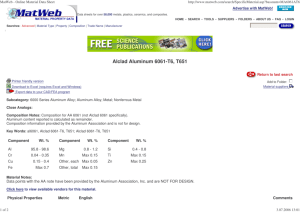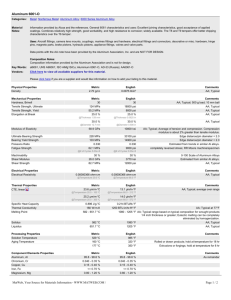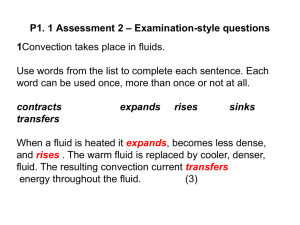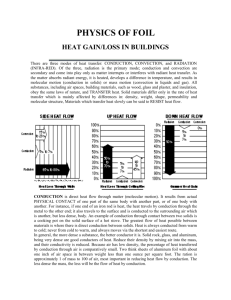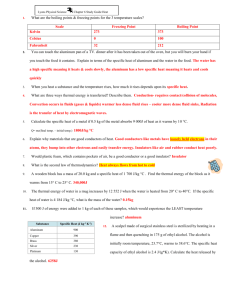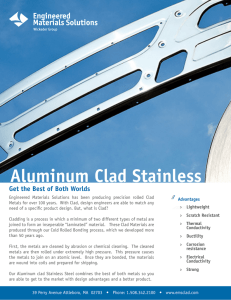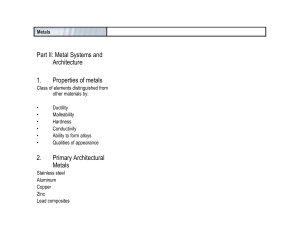12/6/06
advertisement
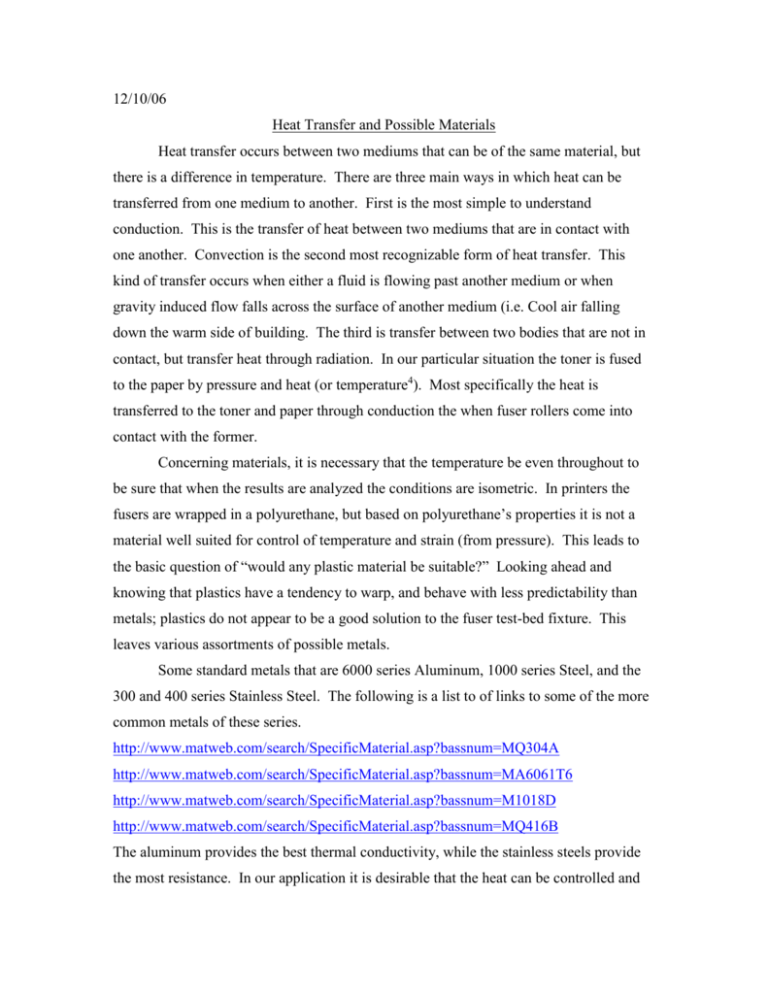
12/10/06 Heat Transfer and Possible Materials Heat transfer occurs between two mediums that can be of the same material, but there is a difference in temperature. There are three main ways in which heat can be transferred from one medium to another. First is the most simple to understand conduction. This is the transfer of heat between two mediums that are in contact with one another. Convection is the second most recognizable form of heat transfer. This kind of transfer occurs when either a fluid is flowing past another medium or when gravity induced flow falls across the surface of another medium (i.e. Cool air falling down the warm side of building. The third is transfer between two bodies that are not in contact, but transfer heat through radiation. In our particular situation the toner is fused to the paper by pressure and heat (or temperature4). Most specifically the heat is transferred to the toner and paper through conduction the when fuser rollers come into contact with the former. Concerning materials, it is necessary that the temperature be even throughout to be sure that when the results are analyzed the conditions are isometric. In printers the fusers are wrapped in a polyurethane, but based on polyurethane’s properties it is not a material well suited for control of temperature and strain (from pressure). This leads to the basic question of “would any plastic material be suitable?” Looking ahead and knowing that plastics have a tendency to warp, and behave with less predictability than metals; plastics do not appear to be a good solution to the fuser test-bed fixture. This leaves various assortments of possible metals. Some standard metals that are 6000 series Aluminum, 1000 series Steel, and the 300 and 400 series Stainless Steel. The following is a list to of links to some of the more common metals of these series. http://www.matweb.com/search/SpecificMaterial.asp?bassnum=MQ304A http://www.matweb.com/search/SpecificMaterial.asp?bassnum=MA6061T6 http://www.matweb.com/search/SpecificMaterial.asp?bassnum=M1018D http://www.matweb.com/search/SpecificMaterial.asp?bassnum=MQ416B The aluminum provides the best thermal conductivity, while the stainless steels provide the most resistance. In our application it is desirable that the heat can be controlled and modified quickly when needed. The gut instinct would be to use the 6061 aluminum with nickel plating, but upon reading the uses of the materials another possibility arose. In the uses of 304 stainless steel, cooking pans are mentioned, and the thought of possibly using aluminum with a Teflon coating seems like it might be a possibility worth further investigation and discussion. The following link discusses some of Teflon coatings’ properties. http://www.lubecoat.com/coating.html Extra Information: 1. Basic Energy equation: E=U+KE+PE+others a.) U = m*(u2-u1) 2. Neglecting KE and PE for a closed system a.) (|Qin|-|Qout|) + (|Win|-|Wout|) =U b.) Q is heat c.) W is work (Electrical) d.) U is internal Energy 3. Basic Heat Transfer qin-qout+qgen=qstored a.) Conduction-Electron transfer of Heat through matter b.) Convection- Motion transfer (natural gravity or fluid flow). c.) Radiation (blackbody) - Does not need matter for transfer of heat. 4. Basic Formulas for Conduction (Convection and Radiation are dominated by conduction).
